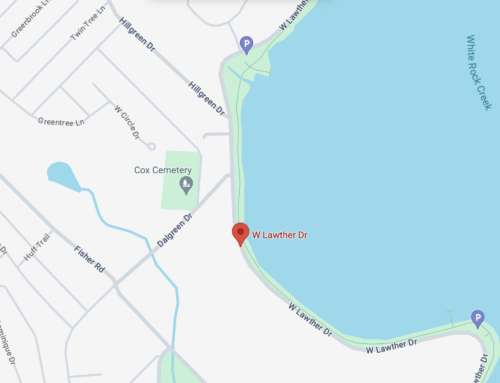The death of actor Philip Seymour Hoffman last weekend was an excruciating reminder of the perpetually lurking hazards of heroin.
I learned about the apparent overdose of one of my all-time favorite actors — who reportedly died near a syringe and several baggies containing heroin — on the heels of a heartbreaking interview I conducted last week with a Lake Highlands mother who lost her son to the same drug.
Nancy Cripe, a nurse at Lake Highlands High School and mother of three, lost her husband to cancer in 2001. Then her distraught teenage son, Stephen — despite her best efforts to get him to work through his grief with a psychologist — began smoking marijuana to mask his pain, she says.
Anesthetized to some extent by cannabis, Cripe guesses, Stephen experimented with other drugs, including heroin. That one got its claws in him and never let go. After several attempts at treatment, Stephen — a lovable, handsome, popular boy by all accounts — overdosed and died in the bathroom at a fast-food restaurant. He was 24.
Yesterday I listened to a story on NPR about the proliferation of heroin and why we seemingly hear of another related tragedy every few months. I also came across a two-year-old piece on the Observer’s blog which notes that every couple years, Dallas neighborhoods experience a cluster of heroin overdoses, and then we all are “so surprised”, even though it “routinely happens every couple of years.”
The writer has a point. Heroin is not a New York thing. Not a junkie-on-the-street thing. Not a celebrity thing. It’s accessible and widely used by people of varying age, cultural and socioeconomic brackets. Below are some of the ideas I took away from my interview with Nancy Cripe and with people in recovery programs and the other research related to an upcoming Lake Highlands Advocate story.
May the following insight help keep parents, friends, spouses, teachers and coaches of potential abusers alert; it has been a couple of years since we’ve had a rash of heroin deaths locally. Let’s not let tragedy catch us off guard.
1. Seemingly harmless drugs usually precede heroin — marijuana, alcohol and prescription drugs might be innocuous in isolated situations. But impaired judgment can leave some users more vulnerable to heroin. Nancy Cripe says her son would not have dared use heroin had he been sober. She believes that marijuana and/or other more socially acceptable substances, such as alcohol or prescription pills, coupled with his depression, lowered the inhibitions that normally would have stopped him from ever trying heroin.
Opiate-based prescription drugs such as oxycodone and hydrocodone potentially are especially dangerous because when abused they can create the same type of physical addiction as heroin. When the patient or user cannot get the pills, he or she can gain the same effect by using heroin.
oxycodone and hydrocodone potentially are especially dangerous
“As patients became addicted, doctors began cutting back their prescriptions … experts say that’s when heroin suppliers stepped in to fill the void,” according to the aforementioned NPR piece.
Philip Seymour Hoffman reportedly is an example of someone who started using narcotic pain pills and later heroin. Typically heroin is easier to get than legal medication, police have said.
2. Heroin’s image has changed — here in Dallas it often is marketed as cheese, police say, which sounds more benign than heroin, but it is heroin, and in some cases it is more dangerous because it is mixed with other substances that can enhance heroin’s effect. Evidently heroin has become more socially acceptable among substance users — nationwide, heroin use increased 79% between 2007 and 2012.
3. Heroin does not need to be injected to kill. People die from snorting heroin too. Snorting, some users say, is mistakenly viewed as a safer way to use heroin and other opiates.
people die from snorting heroin too
4. Heroin and opiates like oxycodone are excruciatingly addictive, mentally and physically. An addict without the drug will go into withdrawal within about a day of abstinence; then he or she will be desperate.
“Stephen would get so sick when he tried to stop,” says Nancy Cripe of her son. Chills, fever, diarrhea, vomiting, nausea, migraine-level headaches, body aches, insomnia, anxiety—these are the symptoms of heroin and/or opiate painkiller withdrawal. The symptoms — though most acute during the first 72 hours — can last for a month or more. Someone who is addicted to heroin might seem perfectly normal. Nancy’s son acted abnormal only when he didn’t have the drug in his system. When desperate for relief, he would steal from his mom, she says, and every time he would later call her to apologize. “He just had no control.”
5. An addict who tries to quit then relapses is in more serious danger of overdosing. Someone who uses opiates every day has a tolerance. Someone who quits for a month, year or more and then uses again (or a sporadic user) is susceptible to overdose because they misjudge the amount they can handle; that presumably is what happened to Cory Monteith from the show Glee. Seymour Hoffman reportedly also had been clean for more than 20 years before he began using narcotics. Here is a piece that explains how an overdose kills the user.
a sporadic user is susceptible to overdose because they misjudge the amount they can handle
I interviewed Nancy Cripe as part of a story on a Lake Highlands-based sober house, which will appear in our March issue. She is in the process of creating a nonprofit in Stephen Cripes’s name. Meanwhile, there is a Facebook page including details regarding contributions.






